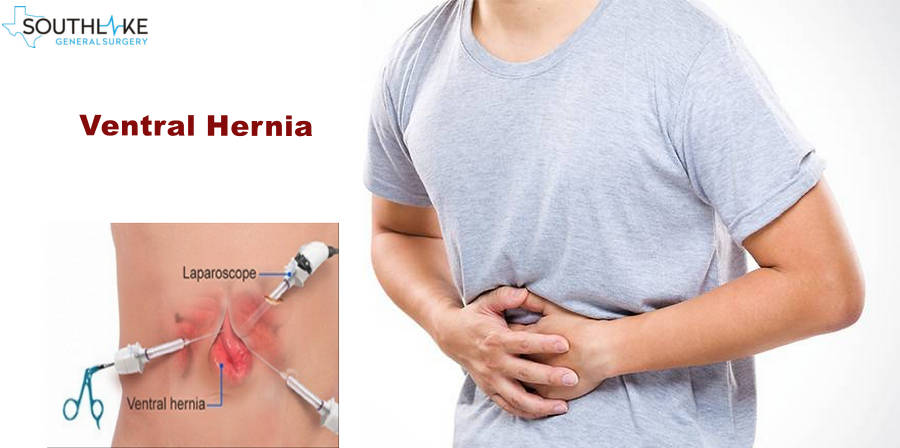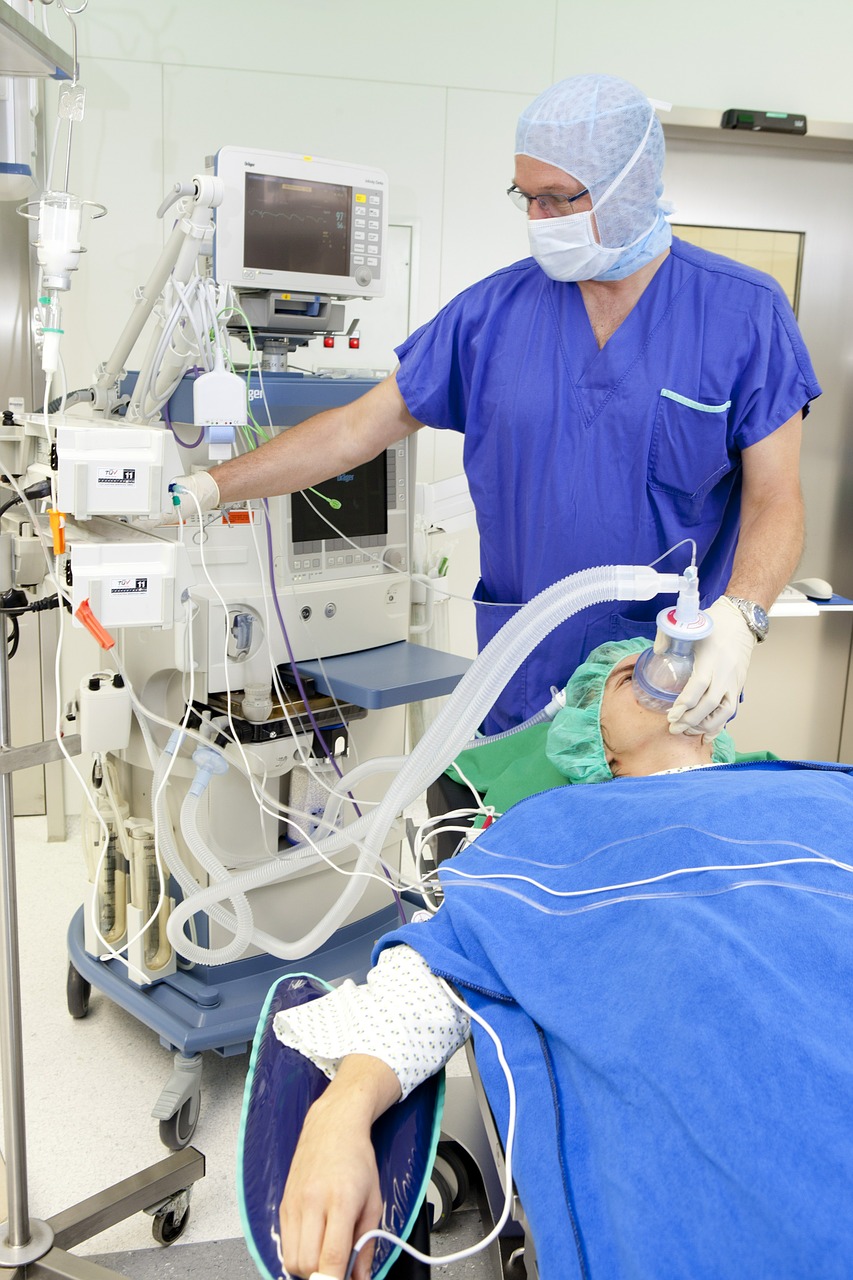What is Ventral Hernia?
A lump of tissues through an opening of frailness inside the abdominal wall muscles known as ventral hernia. It can happen at any area on your abdominal wall.

Many are known as incisional hernias since they structure at the healed site of past surgical incisions. Here abdominal wall layers have gotten frail or thin, allowing for abdominal cavity substance to push through.
In a strangulated ventral hernia, intestinal tissue gets firmly captured within an opening in the abdominal wall. However, this tissue can’t be pushed back into your abdominal cavity, and its blood flow is cut off. This sort of ventral hernia requires emergency surgery.
Hernias can happen in different places of the body and are named after the area where they occur — for instance, a femoral hernia happens in the upper thigh.
Risk factors Ventral Hernia.
Certain individuals are born with an inborn deformity defect — one existing from birth — that makes the abdominal wall to be abnormally thin. They are at a more serious risk for building up a ventral hernia. Other risk factors that cause a ventral hernia include:
Certain individuals are brought into the world with an inborn deformity — one existing from birth — that makes their stomach divider be anomalous slim. They are at a more serious hazard for building up a ventral hernia. Other hazard factors for a ventral hernia include:
- pregnancy
- obesity or being overweight
- previous hernias history
- abdominal surgeries history
- injuries or wounds to the bowel area
- family ancestry of hernias
- frequently lifting or pushing heavy items
Causes of ventral hernia
According to a study, incisional hernias may happen in up to 30 percent of those who’ve had an abdominal surgery. Many develops at the area of a surgical scar. The scar tissue debilitates or thins, allowing a lump to shape in the abdomen. This sort of lump is tissue or organs pushing against the abdominal wall.
Symptoms of ventral hernia
Ventral hernias can create a variety of symptoms. Symptoms may take weeks or months to show up.
It might be possible few individuals have no symptoms. Or on the other hand you could encounter discomfort or severe pain in the area of hernia, which might deteriorate when you try to stand or lift heavy objects. Few individuals may experience a bulging or growth in the region that feels tender to the touch.
If you experience any of the accompanying symptoms or side effects, immediately consult a doctor:
- mild uneasiness in the abdominal area
- pain in the abdomen
- outward bulging of skin or tissues in the abdominal area
- nausea
- vomiting
How is a ventral hernia diagnosed?
In a complete diagnosis, our doctor will ask some information about the symptoms and perform physical test. They may need to arrange imaging tests to see inside your body for indications of a ventral hernia. These may include:
- ultrasound of abdomen
- CT scan of abdomen
- MRI scan of abdomen
Treatment of Ventral hernia
Ventral hernias require surgical remedy. Whenever left untreated, they keep on developing gradually until they can cause serious complications.
Untreated hernias can grow into expanded ventral hernias that become logically hard to fix. Swelling can lead to catching of hernia contents, a procedure called incarceration. This can prompt diminished or no blood supply to the tissues in question, which is alluded to as strangulation.
Options for surgical treatment of ventral hernia include:
Mesh placement surgery
A surgeon pushes tissue into the right spot and afterward sews in a mesh, which fills in as a strengthening patch, to hold it in place. This is examine as safe and dependable, and mesh position has been appeared to reduce risk of hernia repeat.
Laparoscopic ventral hernia surgery
A surgeon makes multiple small incisions and operate the hernia with direction with a micro-mini camera inside your body to coordinate the surgery. A mesh might be used.
Open surgery (non-laparoscopic)
A surgeon makes an incisions neighboring your hernia, pushes the tissues back to its place, and then suture the open area. A mesh could conceivably be used.
Benefits of laparoscopic hernia removal include the following:
- a smaller incisions site, which reduce the chance of infection
- minimal postoperative pain
- short duration of hospital stay — normally able to leave day of or day after surgery
- absence of a large scar
- a quick overall recovery time
These are a couple of concerns about open surgery:
- long duration of stay in the hospital after surgery
- painful surgery as compare to laparoscopic
- Scar would be medium to large
Are there complications of ventral hernia?
Huge ventral hernias are those that have a length or width of in any event 15 centimeters (cm) or a general region of 150 cm2, as indicated by a study. They represent a serious surgical risk. The huge size hernia fills the abdominal cavity, making it hard to isolate from encompassing organs. As the hernia increase in size, the risk of a reoccurrence likewise gets higher.
Other complexities of untreated hernias may include:
- Incarceration: Intestine gets caught in a frail abdomen wall where it can't be pushed back within the abdominal cavity. This may create blockage to intestine or block its blood supply.
- Strangulation: This happens when blood flow to intestine is blocked. Some portion of intestine may die or start to decay. Immediate surgery is important to reestablish blood flow and revitalize the intestine.

